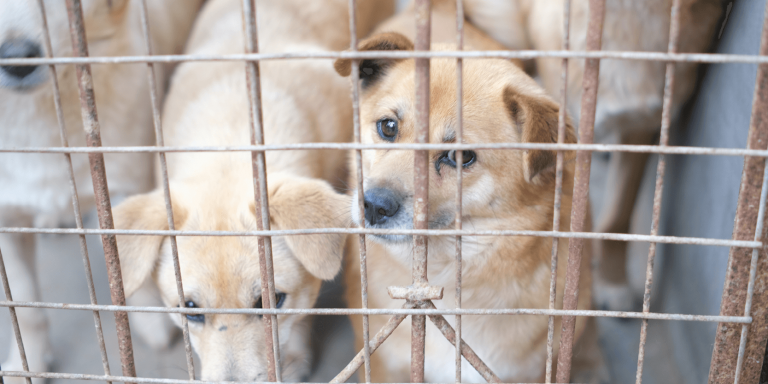
Identifying illegal ads on the Internet more quickly and following up on them is one of four pilot projects assigned to FARI by Bernard Clerfayt, Belgium’s Minister for Digital Transition. The Brussels-based institute, founded by the Vrije Universiteit Brussel (VUB) and the Université Libre de Bruxelles (ULB) in 2021 as part of the European community’s recovery plan, has therefore implemented the ” Animal Wellfare” project , which aims to enable the city of Brussels to crack down on ads for the illegal sale of animals, the misuse of commercial animal licenses or other illegal activities.
FARI, the “AI Institute for the Common Good “, brings together more than 300 researchers in AI and related disciplines around projects that can benefit the public good. It promotes research on trustworthy, transparent and explainable artificial intelligence and aims to help the Brussels-Capital Region and its inhabitants address challenges they face in various domains.
Bernard Clerfayt states:
“The Region must take ownership of artificial intelligence if it wants to take advantage of this technology for the benefit of its citizens. On the one hand, public administrations will be able to rely on the scientific and technological knowledge of our recognized researchers. On the other hand, they will be able to deploy the full potential of their research to improve our public services.
Illegal trade in pets
Animal trafficking is the third largest trade in the world, after arms trafficking and drug trafficking. Dogs and cats are the most popular pets in the EU, there are more than 20 million of them in France. Breeders can’t satisfy the demand, so they are found in pet shops that import them mainly from Eastern European countries. Puppies and kittens are taken from their mothers too early, and travel in deplorable conditions, without food or water. It is estimated that 100,000 of them arrive in France illegally each year, “provided” with false papers.
In addition, there are many ads for the sale of animals on the Internet, notably on Facebook, Leboncoin, etc., whether they are dogs, cats or NACs. FARI reports that, according to Four Paws International (a global animal protection organization), the European online trade in puppies is worth nearly 1.5 billion euros per year and nearly 2.4 million dogs are traded each year on the main European classified ad sites that advertise dogs, a figure that has increased significantly during the pandemic.
Identifying illegal ads in Belgium thanks to AI
Since February 16, 2015, the animal is considered in the French Civil Code as a “living being endowed with sentience” and no longer as a “movable property”, the Brussels Parliament on November 13, 2018 also recognized this status. Its trade is subject to various regulations within the EU.
Among the ads for the sale of animals, most come from dishonest traders who do not care about the relevant regulations. Others come from private individuals, wishing to sell their cat or dog’s litter, ignoring them.
The project was led by the ULB Iridia group of Prof. Hugues Bersini, the Ann Nowé AI lab at VUB supervised the different AI models applied. It is based on a design of algorithms and software to automatically detect online animal sale ads on different websites. Based on animal welfare legislation, the technology classifies whether it follows the rules or not within seconds, so illegal ads can be tracked before animals are sold.
Hans De Canck, co-leader of FARI as co-director of the VUB, explains:
“Sites advertise animals without the necessary vaccination documents or other references. Behind many of these ads, sometimes with pretty pictures of animals, are illegal or at least questionable business practices. Now, it turns out that with the right AI models, you can spot illegal animal trafficking in the sea of ads relatively effectively. This is done using image and text analysis and pattern recognition.”
He adds:
“Sometimes people advertise in good faith about the litter of puppies their dog had and want to place them with people who want a pet. Our AI models select them as well. The administration may be able to step in and show people what they are doing wrong. A side effect is that the administration now has factual evidence to clean up the platforms on which the ads appear.”
‘Since January of this year, 33,500 ads have been shown, and researchers are currently reviewing about 200 ads each day. Legally, none of these ads have been completely acceptable. Some sellers are using fake license numbers or a license that is not their own. Researchers have even found that many display ads for household products when they are actually selling animals.
More than 8,000 ads were for dogs, more than 6,000 were for birds and nearly 4,000 were for cats. Fish (about 3,200), sheep and pigs (more than 2,500), rodents (2,300), horses (2,000), reptiles (nearly 2,000) and rabbits (1,800) were also offered for sale.
Four percent of the ads came from breeders and the total value of the ads is estimated at nearly 8 million euros. Half came from Flanders, 40% from Wallonia and 10% from Brussels.
Translated from IA et bien-être animal : quand l’IA aide à mettre un terme au commerce illégal des animaux de compagnie









